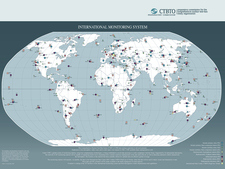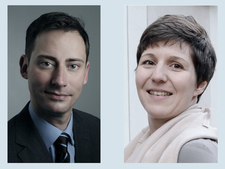-
Topics
subnavigation
Topics
Electromagnetic fields
- What are electromagnetic fields?
- Static and low-frequency fields
- Radiation protection relating to the expansion of the national grid
- High-frequency fields
- Radiation protection in mobile communication
Optical radiation
Ionising radiation
- What is ionising radiation?
- Radioactivity in the environment
- Applications in medicine
- Applications in daily life and in technology
- Effects
- What are the effects of radiation?
- Effects of selected radioactive materials
- Consequences of a radiation accident
- Cancer and leukaemia
- Genetic radiation effects
- Individual radiosensitivity
- Epidemiology of radiation-induced diseases
- Ionising radiation: positive effects?
- Risk estimation and assessment
- Radiation protection
- Nuclear accident management
- Service offers
-
The BfS
subnavigation
The BfS
- About us
- Science and research
- Laws and regulations
- BfS Topics in the Bundestag
- Links
Another nuclear weapons test in North Korea
- On 3 September 2017 at 5:30 a.m. (CEST), the Comprehensive Nuclear-Test-Ban Treaty Organization (CTBTO) registered again seismic shockwaves that were probably caused by an-other underground nuclear weapons test in North Korea.
- The CTBTO is an international network aimed at detecting secret nuclear weapons testing all over the world. The Comprehensive Nuclear-Test-Ban Treaty Organization links a num-ber of international institutions that perform seismic, infrasonic, sonar and radioactivity measurements.
- Under the CTBTO agreement, the BfS monitors the radioactivity in the air on behalf of the German state. The BfS also supports the Federal Foreign Office in the technical evaluation of the data.

![]() The International IMS measuring network
Source: CTBTO
The International IMS measuring network
Source: CTBTO
On 3 September 2017 at 5:30 a.m. (CEST), the Comprehensive Nuclear-Test-Ban Treaty Organization (CTBTO) registered again seismic shockwaves that were probably caused by another underground nuclear weapons test in North Korea. The last time this has happened was on 9 September 2016. This is assumed to be the sixth nuclear weapons test since 2006.
The Comprehensive Nuclear-Test-Ban Treaty Organization links a number of international institutions that perform seismic, infrasonic, sonar and radioactivity measurements. Under the CTBTO agreement, the Federal Office for Radiation Protection (BfS) monitors the radioactivity in the air on behalf of the German state. The BfS also supports the Federal Foreign Office in the technical evaluation of the data. This sixth test is significantly more powerful than the preceding nuclear tests in North Korea. The National Data Centre of the German Federal Institute for Geosciences and Natural Resources (BGR) performed a preliminary assessment of seismic data (in German) with respect to the incidence and concluded that the local origin was similar to that of the tests in 2006, 2009, 2013 and 2016.
Seismic measurements can be a first indicator of underground nuclear weapons testing
The CTBTO is an international network aimed at detecting secret nuclear weapons testing all over the world. Several dozens of interconnected measuring stations all over the world can detect the slightest traces of radioactivity in the air. Other stations record seismic signals. On the Schauinsland mountain near Freiburg, the BfS performs the only one of these hypersensitive radioactivity measurements in Central Europe. Air samples are taken daily and are analysed with the help of highly sensitive measuring technology.
In the event that radioactivity has been released in the current nuclear weapons test, this could be detected by one of the nearest CTBTO measuring stations in Asia. It cannot be expected that the Schauinsland measuring station will detect traces because of the long distance to North Korea. Since it was an underground explosion, only a small amount of radioactive substances is expected to have been released, so that travellers to the Far East do not need to fear any health risks.
The currently registered seismic data can be a first indicator of an underground nuclear weapons test. Radioactive noble gases produced by nuclear weapons testing can reach the atmosphere through the soil with some delay. A definitive distinction between a chemical and a nuclear explo-sion will only be possible if radioactive fission products can be detected at one of the measuring stations. Currently, a nuclear explosion appears to be more likely. According to the seismic data, this sixth nuclear weapons test produced the strongest power of explosion so far.
World-wide monitoring system
With the assistance of the signatory states, the CTBTO headquartered in Vienna is setting up a world-wide monitoring system with a network consisting of 321 measuring stations. This system will be able to detect, identify and even localise a nuclear explosion anywhere in the world with a high probability. The system is based on
- 170 seismographs in the ground,
- 11 underwater microphones in the oceans,
- 60 infrasonic microphones in the atmosphere and
- 80 trace measuring stations for radioactivity in the air.
Germany operates five CTBTO stations: Two seismic and two infrasonic measuring stations (run by the BGR) and a radioactivity measuring station (run by the BfS) on the Schauinsland mountain.
State of 2017.09.03



